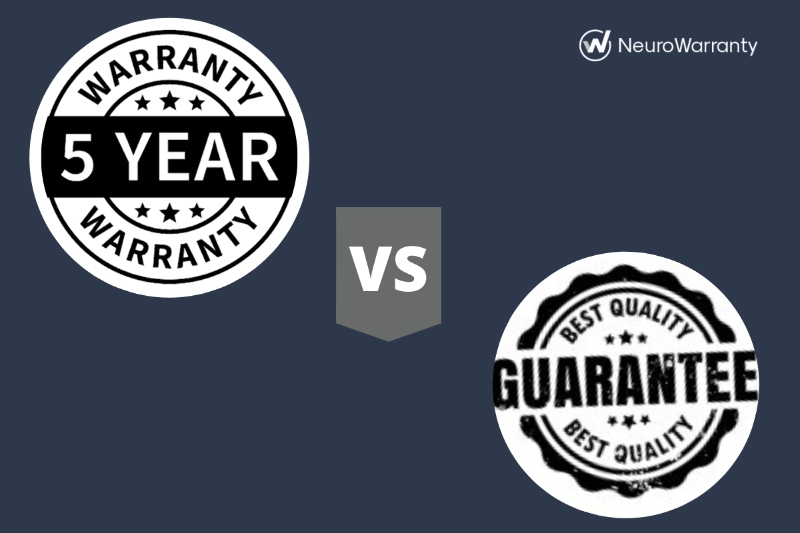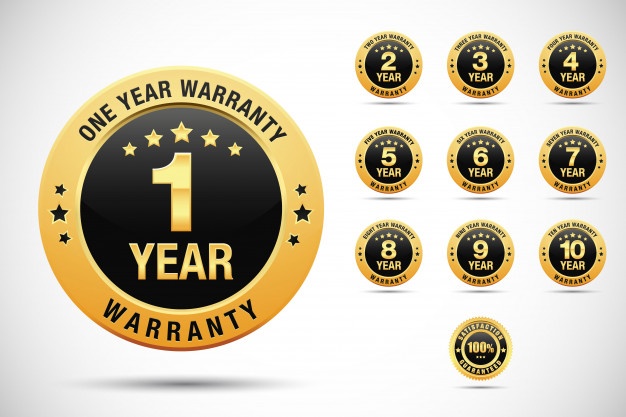
In this sense, the phrase warranty is extremely widely employed. It indicates a formal guarantee given to the customer about the status of the goods is truthful and says that the manufacturer will be liable for the repair or replacement if proven faulty.
Contents
What is a warranty?

To get to know about the differences between Warranty and Guarantee, let's talk about Warranty first. According to the definition, a warranty is an agreement to offer free repair services for any problems that may develop with a product during the course of regular usage of the device within the warranty period. If the manufacturer does not guarantee replacement, then he promises to repair the product.
When a corporation is accountable for the product's functionality, there should be a minimum time range throughout which the product must function. This implies that the customer is covered against abrupt breakage or sudden faults with the goods. It makes no sense to pay for repairs if you have just purchased a high-priced refrigerator that stops operating a month later.
Consequently, companies provide guarantees with their products as a means of demonstrating their commitment to the long-term viability of their products. And today, generally, warranty management is managed by warranty management software, which has made lives simpler for various firms. NeuroWarranty gives a corporation an alternative for manual warranty registration by bringing digital warranty management.
What is a Guarantee?

Guarantee is a step ahead of Warranty when the firm is so sure of their goods that they repair or replace the product. Shortly put, if a product faults with it, the manufacturer will first attempt to fix it, and if that is unsuccessful, it will provide a free replacement product.
Customer rights are enhanced by a guarantee, which indicates that the maker has made a promise about the product's content, quality, or performance. If the duty is not met, the manufacturer will replace or repair the product, or the money paid as consideration will be repaid, despite being only good for a specific period.
There are three parties involved in a guaranteed contract: surety, the primary debtor, creditor, where the manufacturer serves as a survey if the product's performance is below average.
Critical distinctions between Warranty and Guarantee:
| Warranty | Guarantee |
| Written agreements between two parties are known as warranties. | A guarantee is a verbally expressed promise. |
| The product can be repaired; no commitment of replacement of the product is provided to the consumer. | The product has an option of repair, but if the product can not have a repair, then a replacement would be given. |
| Warranty is a formal guarantee that the mentioned facts about the products are authentic and accurate, but if they malfunction, they can be fixed as well as repaired. | A refund or replacement will be issued if a product fails to meet acceptable quality standards. When a manufacturer provides a guarantee, it means that the manufacturer is making a promise to the client about the quality of the goods. |
| A product can not be refunded in a warranty. | A product can be refunded, or sometimes a replacement is made. |
| Warranty is usually given for products which are known for frequent breakdowns or any mechanical fault. | A guarantee is given for the products which are reliable and durable and are debatable to have any mechanical breakdown or fault. |
| Warranty is legal binding between manufacturer and consumer | Guarantee is a verbally expressed promise, hence no legal binding. |
| To keep the product's interest alive, the buyer must pay for the product's Warranty. | For Guarantee, no cost is needed, and it's totally free. |
| The Warranty's duration is longer. | There is no assurance that a product will last the same amount of time as another. |
| After the Warranty ends, an additional warranty can be given. | After the Guarantee ends, additional guarantees are rare, and instead of a guarantee, an additional warranty can be given. |
| Warranty is usually given for certain parts, but there may be some parts that may need payments for an additional warranty. | The Guarantee covers only some parts, and some parts might be covered by a warranty. |
| Warranty can be automated by warranty management software. | Customers are guaranteed satisfaction with a warranty from a manufacturer. |
Essential facts to know regarding warranty management and Guarantee:
As you have read above, differences between Warranty and Guarantee stand as variances in legal proposals. A customer can easily claim a repair of any product for free, but he cannot claim the replacement of the product as the company is not legally bound for a replacement.
While most firms know that it is cheaper to replace a product now than to deal with legal difficulties later, there is another essential point to be addressed. At the same time, one unhappy customer might result in a loss of 10 optimistic consumers owing to the unfavourable word of mouth.
If the customer is upset with the product, then a warranty may be turned into a guarantee, and a free replacement might be supplied to appease the customer. If the customer is not using the product in the correct manner while not following the rules and regulations provided by the corporation, the Warranty and Guarantee can be called void.
It is also conceivable that a complete product can never be covered under Warranty and the Warranty typically varies for various product sections.
Final thoughts:
Studying the documents accompanying the Warranty or Guarantee is vital to understand what is covered under Warranty and Guarantee.
After the explanation about the differences between Warranty and guarantee above. To some extent, Guarantee and Warranty mirror each other since they both talk about the performance of the products, but they are not similar and have vast distinctions.


